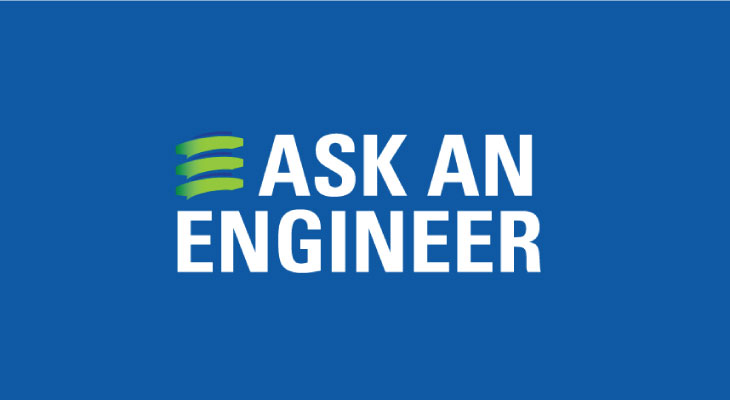The Top Five “Ask an Engineer” Questions!

Do you have linear motion questions that need to be answered? We’d love to hear from you! Here are our top 5 most popular questions from our “Ask an Engineer” weekly social media feature.
Top 5 “Ask an Engineer” questions
1. What does efficiency mean when referring to lead screw vs. ball screw?
Efficiency refers to how well a screw converts rotary energy (torque) into linear energy or motion.
Ball screws are inherently more efficient as they utilize rolling contact instead of the sliding contact of a lead screw. Rolling contact has a lower coefficient of friction than sliding contact. As a result, ball screws provide a relatively constant efficiency rate of 90% or greater. Lead screws, including Acme screws, offer efficiency levels of between 20 and 80% and operate purely with sliding contact.
Lead screw efficiency can be improved by increasing the helix thread angle and by using PTFE dry lubricant coatings.
For Example:
-- 10mm diameter lead screw with 2mm lead = 41% Efficiency (<50% no back driving)
-- 10mm diameter lead screw with 25mm lead = 83% Efficiency (>50% will back drive)
2. What causes the generation of noise in a lead screw assembly during actuation?
Lead screws inherently operate quietly, but when a lead screw makes noise, it can be caused by a combination of the material used for the screw and/or nut, the alignment of the lead screw assembly, or the linear motion control system’s orientation. The exact cause of lead screw noise should be evaluated on a case-by-case basis due to the potential combination of variables.
Solutions for dampening noise in lead screw assemblies can include changing system speed, improving alignment, and controlling vibration. One of the best ways to avoid these situations is to involve your linear motion manufacturing partner early in the design process. We can help you select materials and system components to ensure a smooth, noise-free operation and project success.
3. How can you improve acme screw efficiency?
Higher Helix Angles - The number of times that the screw must rotate to achieve the same linear displacement is reduced with a higher helix angle.
Lead Screw Nut Selection: performance relates to the coefficient of friction between the nut and the screw. Therefore, the material used so the nut and screw can influence efficiency.
Lubrication - Performance relies on a sufficient lubrication supplied to the nut and screw interface. The proper amount and kind of lubrication are vital.
4. What is a preloaded anti-backlash nut?
A preloaded anti-backlash nut consists of two nut halves with a compression spring between them to take up axial play.
5. Can multiple non-captive linear actuators be used on the same lead screw?
Yes! Multiple non-captive linear actuators can be installed on the same lead screw function independently on the same axis. This makes non-captive linear actuators excellent for paper handling, food processing, semiconductor chip manufacturing, and textile applications.


